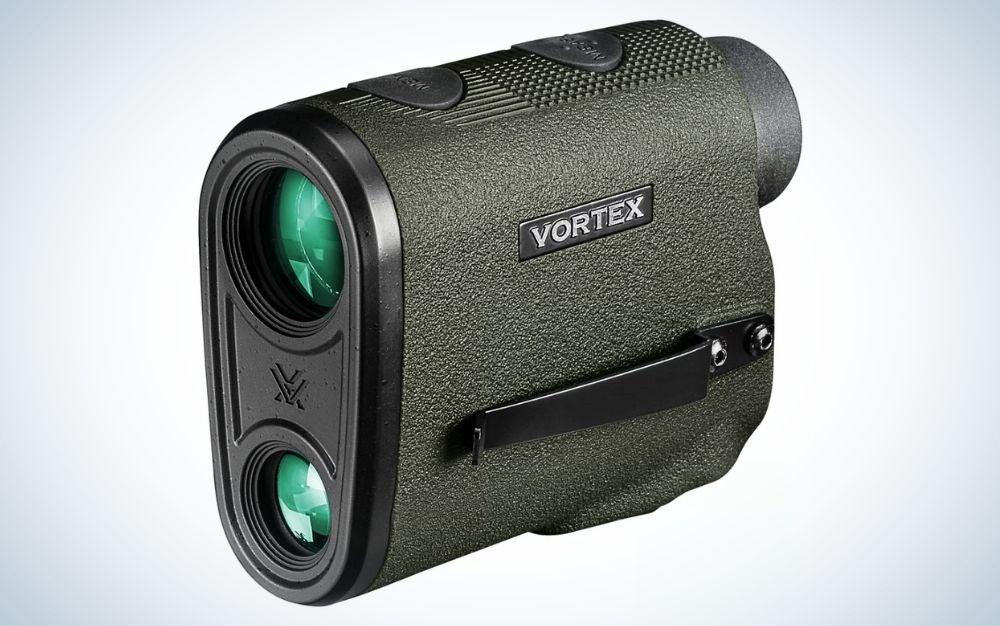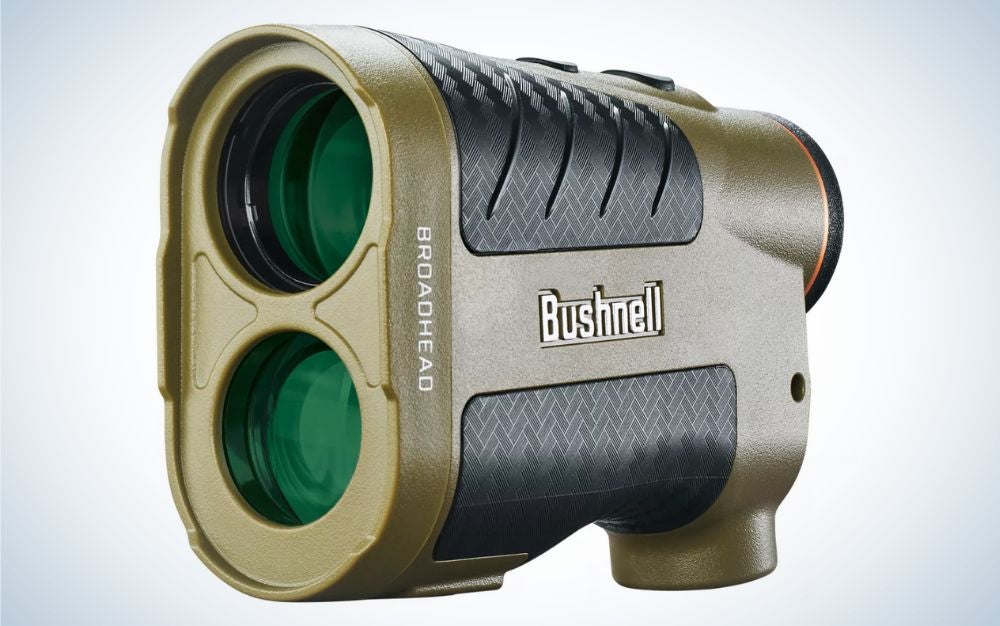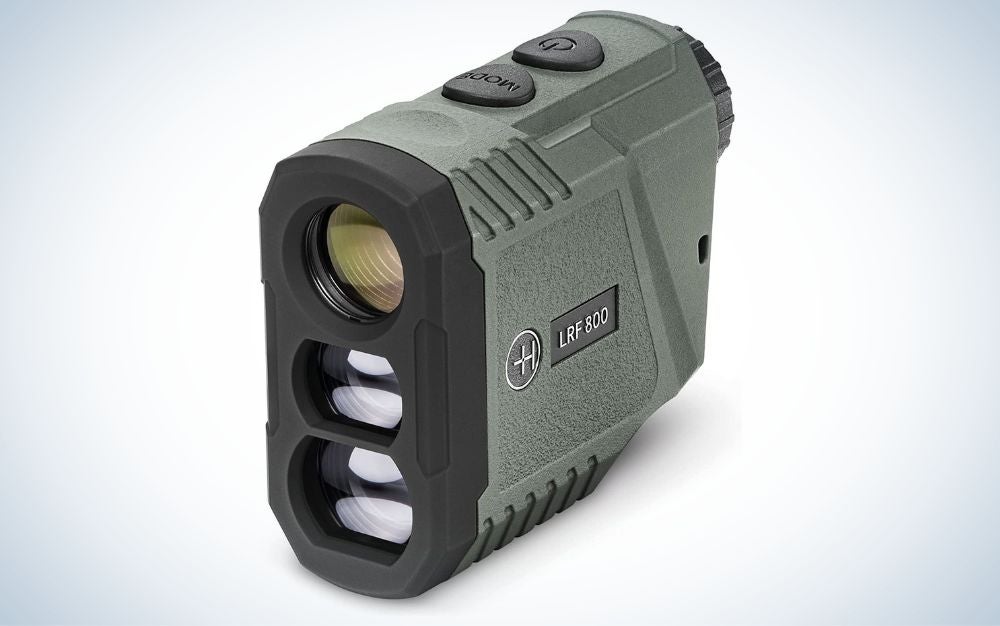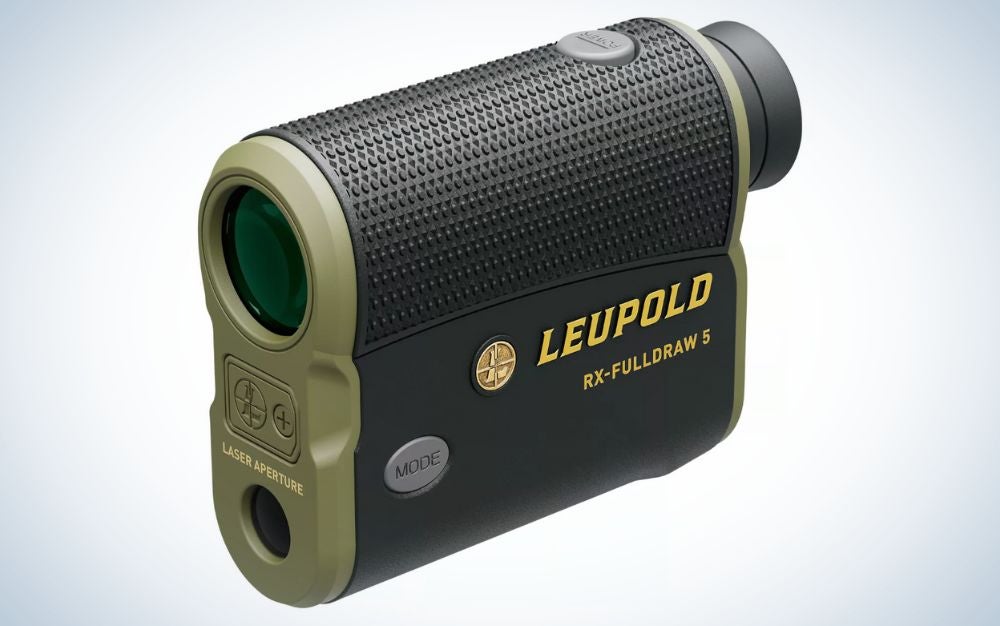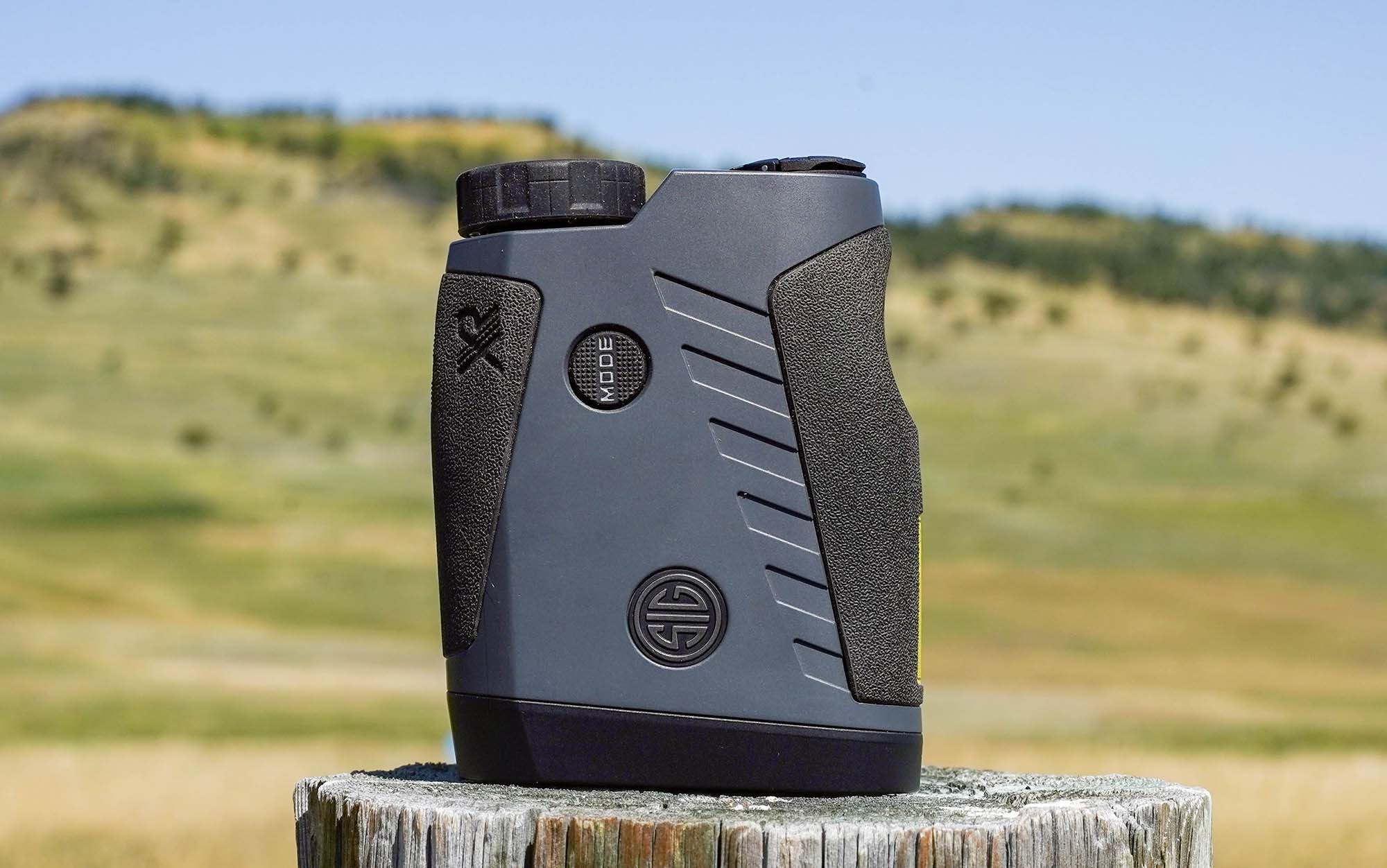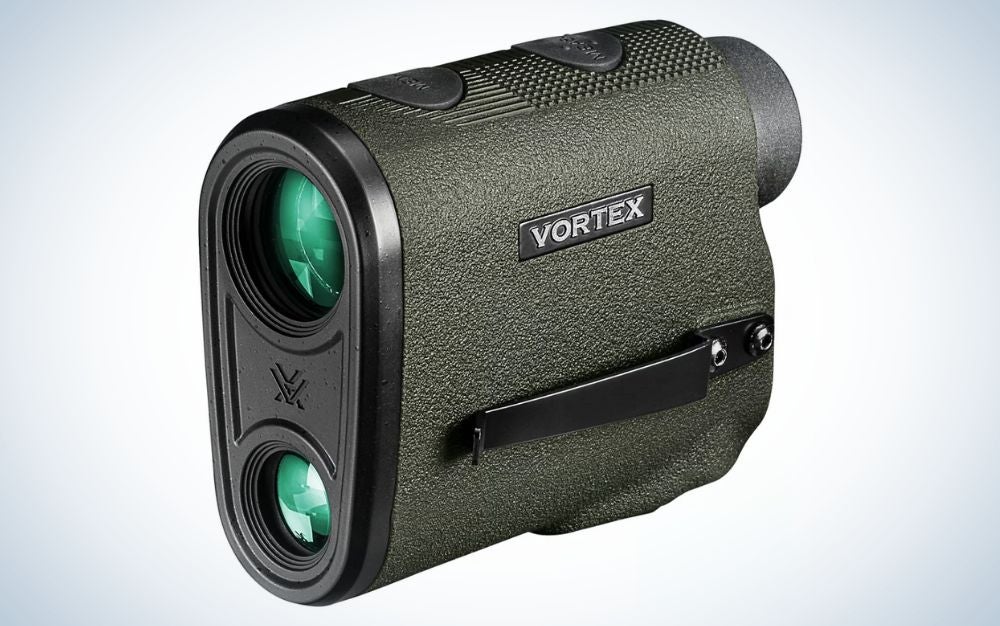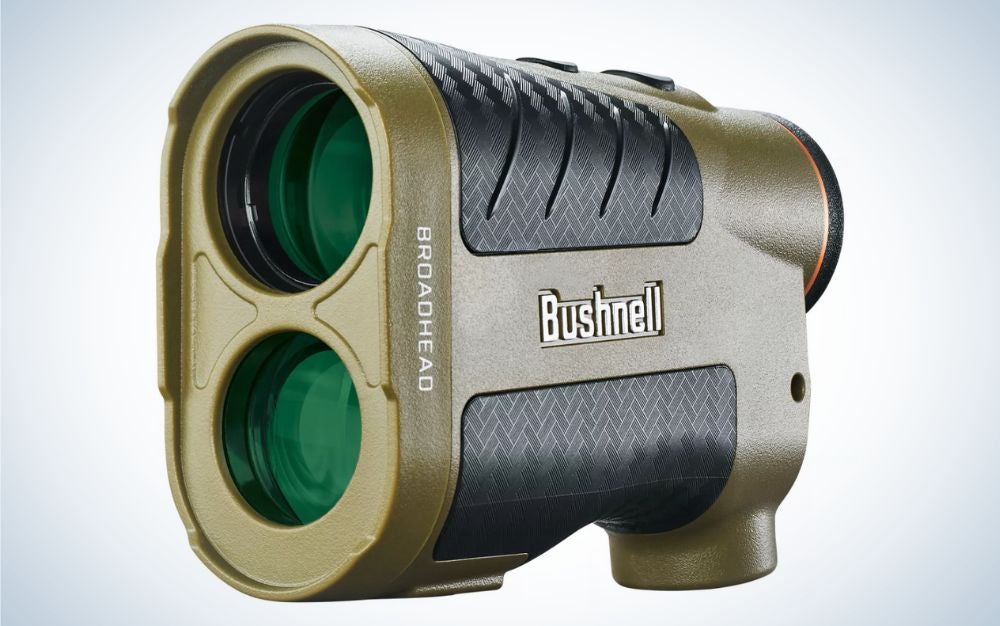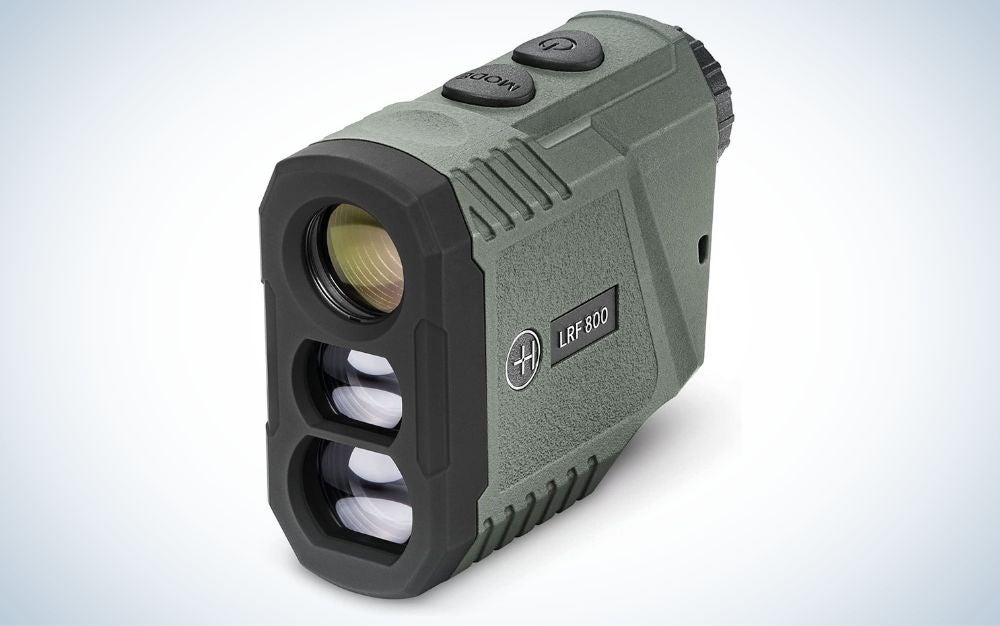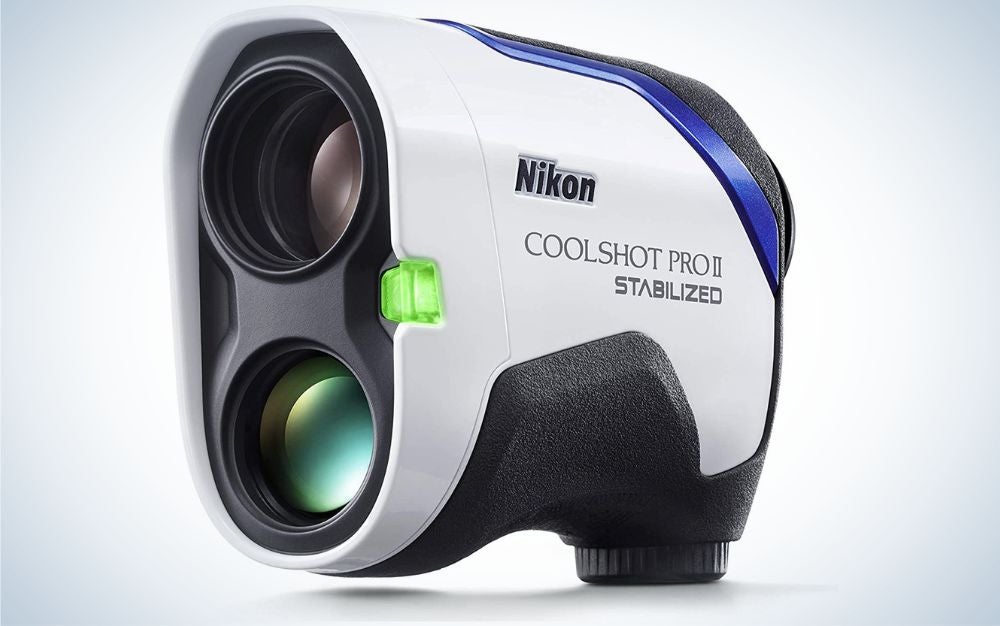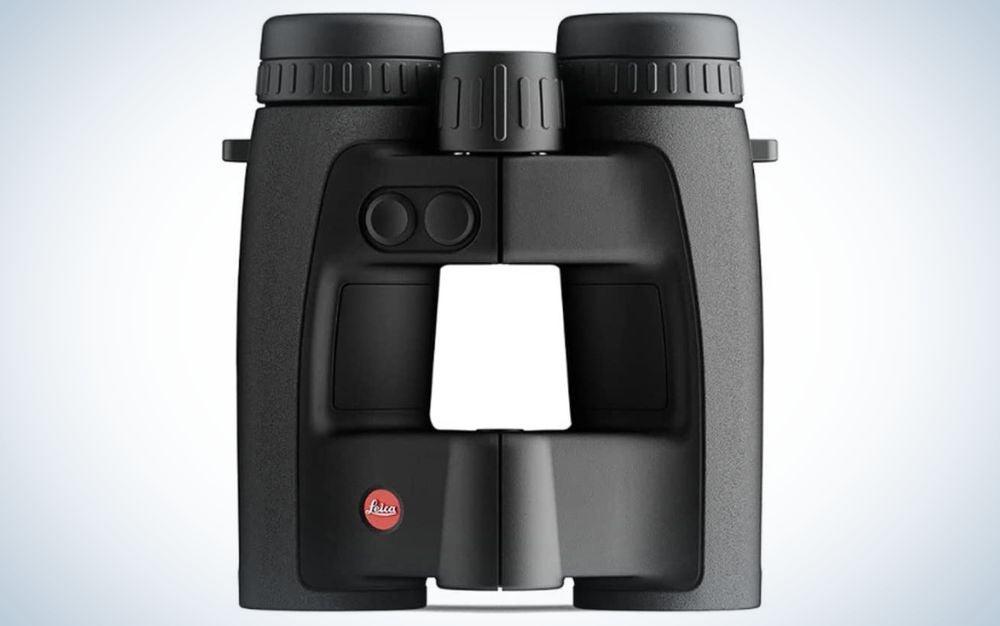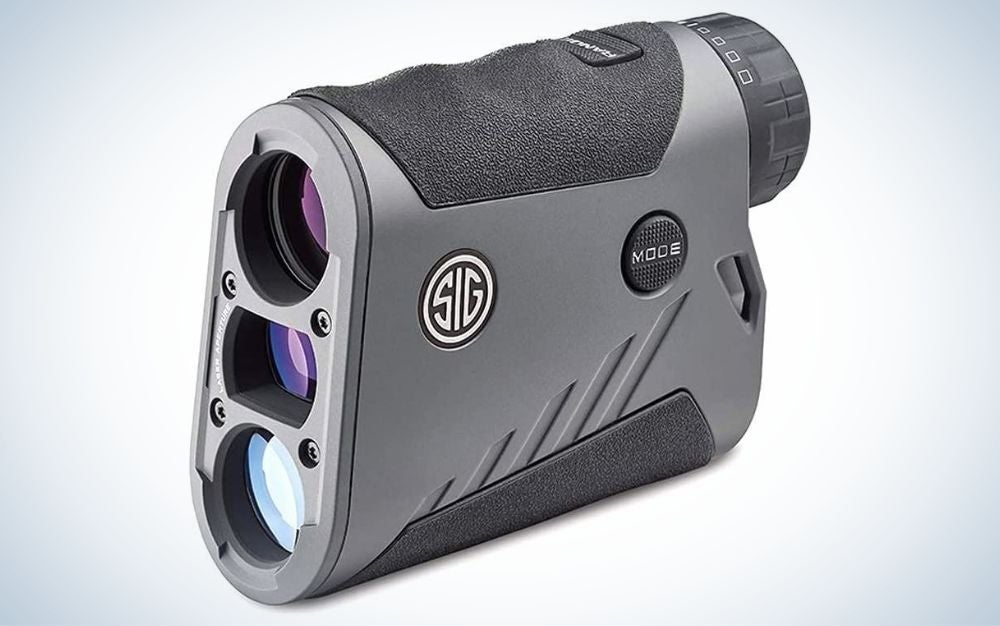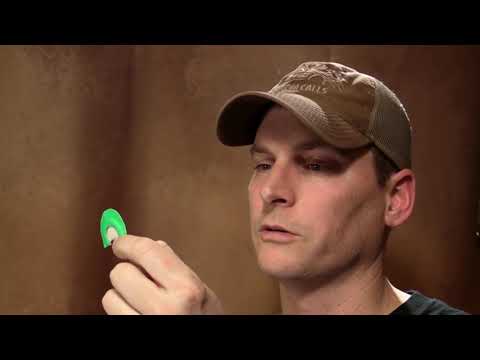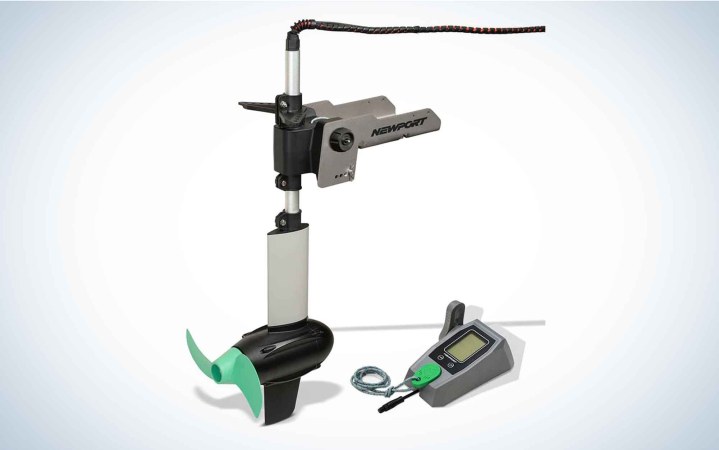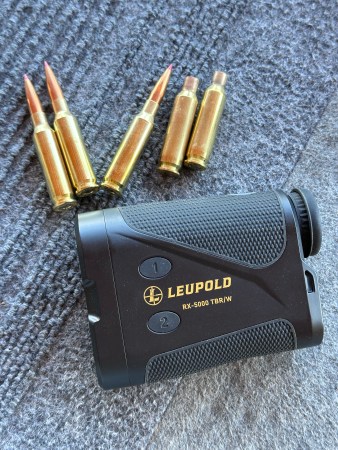The Best Rangefinders for Bow Hunting of 2023
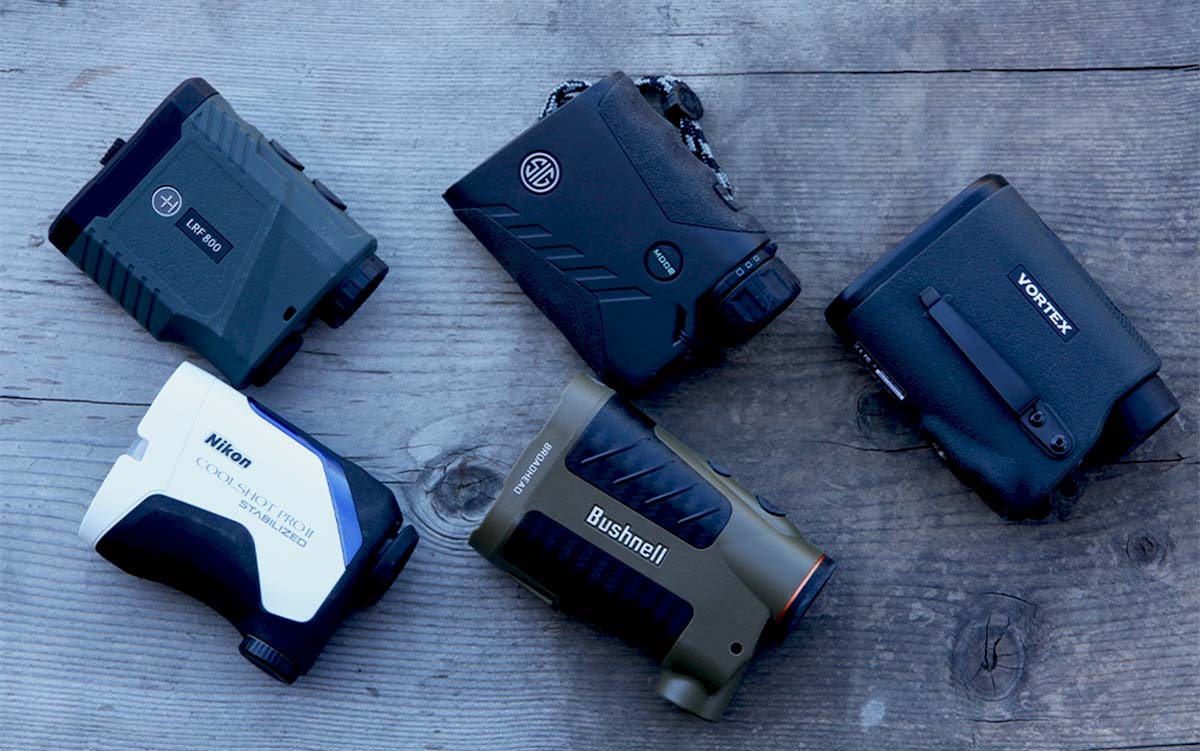
We may earn revenue from the products available on this page and participate in affiliate programs. Learn More ›
Bow hunting is a close-quarters game, a description that might suggest that knowing the specific yardage to your target is less important than precision-rifle competitions where shooters often engage targets out to 1,200 yards. But, rangefinders are critical for both disciplines.
The reason is that arrows travel much slower than a bullet. First, most bowhunters zero their sights for around 20 yards and the 50 inches of arrow drop out to 50 yards is the equivalent of a bullet zeroed at 200 yards dropping a whopping 15 feet by the time it gets to 500 yards. Given that slope, any bowhunter—or long-distance rifle shooter—needs to know the precise yardage to their target.
Rangefinder manufacturers have been engaged in a sort of distance race, boasting increasingly astonishing ranges. Sig’s KILO10K rangefinding binocular advertises a range of 10,000 meters on reflective targets. Most rangefinders calibrated for rifle hunters have the capability to detect deer-sized targets out to 1,000 yards, much farther than any hunter can ethically make a kill shot on game.
However, manufacturers are dialing back this reach, recognizing bowhunters’ need for close-range precision, delivering distance readings in fractions of yards. Thankfully, the best rangefinders for bow hunting incorporate these features and allow bowhunters to know the arc of their arrow’s flight, so they can detect deflecting limbs and even the energy of their arrow at various distances.
- Best Overall: Leupold RX-FullDraw 5
- Best Image Stabilized: Sig Sauer KILO4K
- Best for Mountain Archers: Vortex Diamondback 2000
- Best for Whitetail Hunters: Bushnell Broadhead
- Best Budget: Hawke LRF800
- Best for Elk Hunters: Nikon CoolShot ProII Stabilized
- Best for Binocular Rangefinding: Leica Geovid Pro 32
- Best for Crossbow Hunters: Sig Sauer KILO 1600 BDX
Evaluating Laser Rangefinders
I tested each of these units in the manner that I hunt. I took each to my elevated treestand and ranged a variety of targets at various distances and angles and used each of their target modes (most have a combination of first, last, and best target modes) and both their angle-adjusted and line-of-sight modes. Then I tested their display in full sunlight, in mixed shadows, and at twilight. I measured their scan and return rates, or the speed at which they deliver ranging results. And lastly, I considered their attributes, ergonomics, versatility, price, and warranty. The best of the bunch deliver a ton of versatility—delivering fast, precise ranges at the farthest and the closest targets, while also giving users readings in fractions of yards for close targets.
Best Rangefinders for Bow Hunting: Reviews & Recommendations
Best Overall: Leupold RX-FullDraw 5
Leupold
Key Features
- 6x22mm monocular
- Customizable arrow ballistics
- Flightpath technology
- Archer’s Advantage
Why It Made the Cut
Leupold has adapted the ballistic inputs that long-range rifle shooters use to guide bullets to archers and their arrows. Both the company’s “Flightpath” technology and two modes that define arrow dynamics help archers make shots in just about any conditions or angle. This unit can be used for just about any other ranging requirement but is configured for precision archery.
Pros
- Selectable reticles
- Customizable arrow dynamic inputs
- Compatible with low-velocity arrows
- 6- to 1,200-yard range
Cons
- No tripod mount
- Ballistics input process is tedious
Product Description
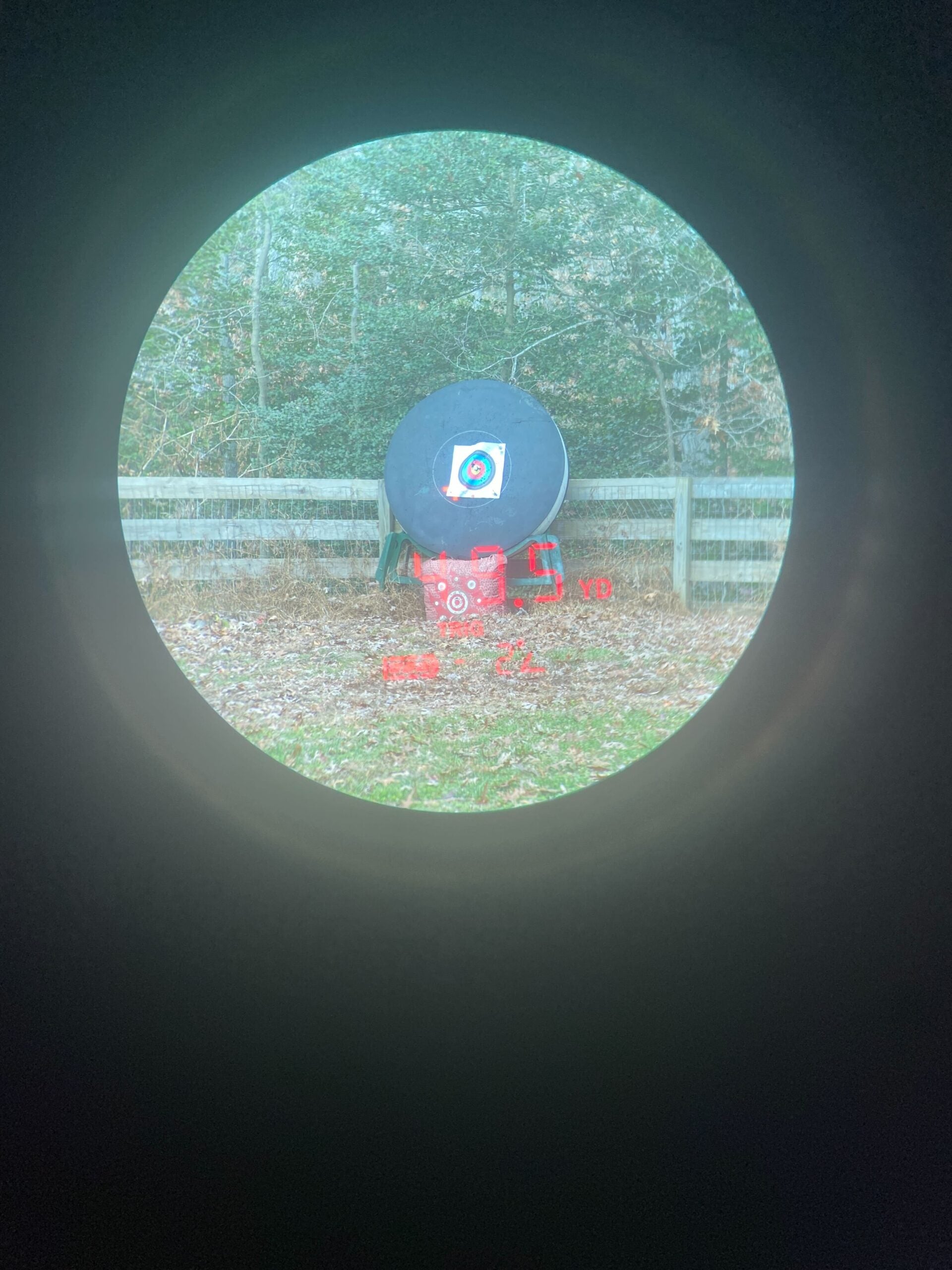
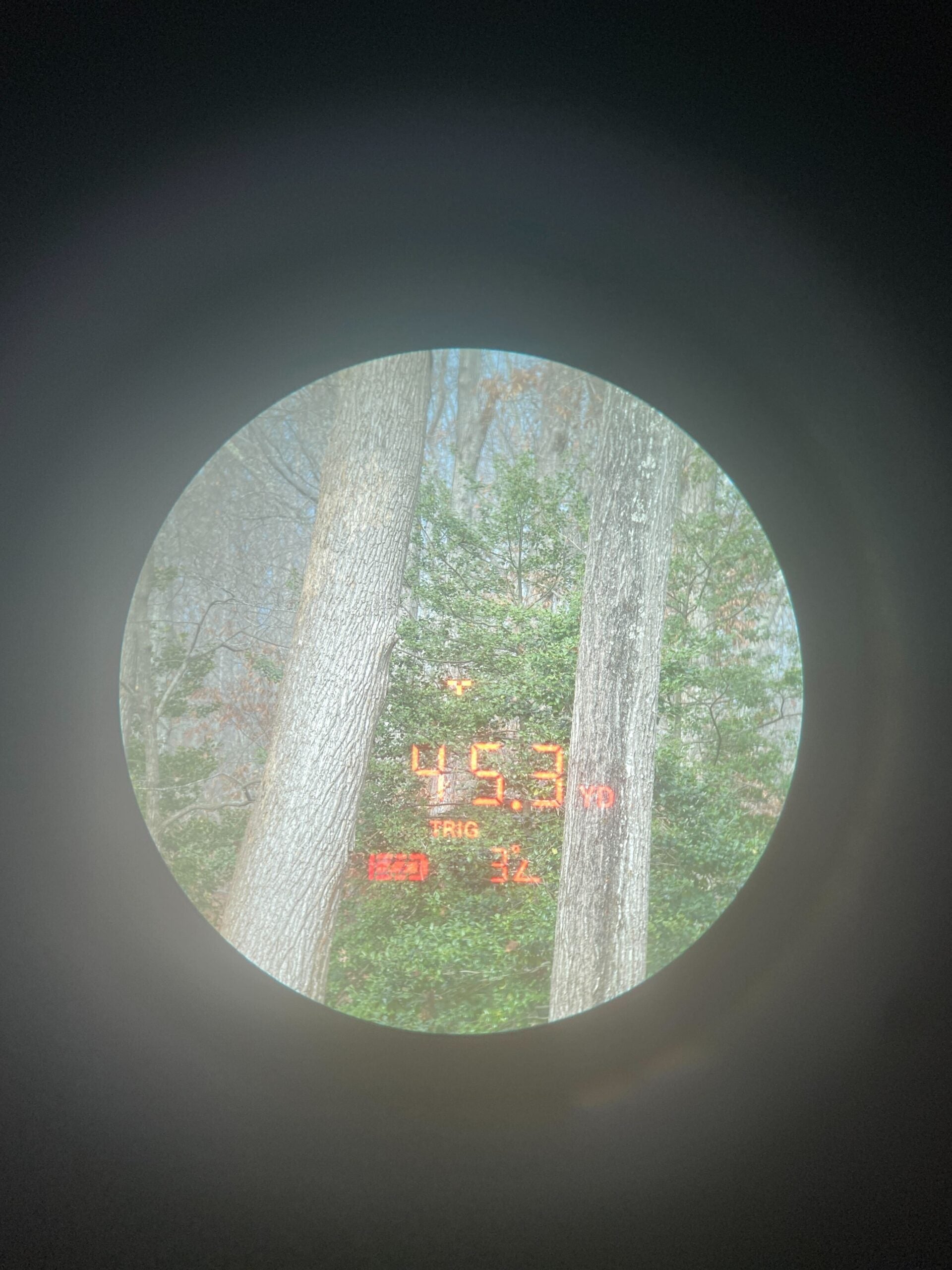
The most precise archery-specific rangefinder on the market, the new RX-FullDraw 5 builds on the attributes of the FullDraw 4, which introduced integrated Archer’s Advantage software that allows bowhunters to shoot a range and then compensate for limbs and other obstacles that might impede their arrow. It also removes the need for a cut chart when shooting extreme angles. The angle compensation makes this a must-have rangefinder for anyone hunting sheep, mule deer, or aoudad in the cliffs.
The FullDraw 5 has a 20-yard pin solution that improves the Flightpath technology, a rain/fog mode that enables close shots, Leupold’s excellent DNA ranging engine, and new ranging software that accounts for lower arrow velocities, a feature that will appeal to traditional archers or compounders trying heavy arrows.
Read our full review of the FullDraw 5 to learn more.
Best Image Stabilized: Sig Sauer KILO4K
Scott Einsmann
Score Card
- Ranging Performance: Very Good
- Display/Optics: Excellent
- Features: Excellent
- Price/Value: Good
Key Features
- 4,000-yard stated range
- Communicates with BDX-enabled sights and devices
- Image stabilization
- 6x22mm
- Aiming solutions powered by Applied Ballistics Ultralite
- Ultra-fast ranging engine
- Five target modes: first, best, last, fog, extended range
Pros
- Stabilization settles image
- Connects to BaseMap app for dropping waypoints
- Archery mode
- Fastest ranging engine in the test
- Circle plus milling grid reticles
- Tripod mountable
- 5.3-yard minimum range
Cons
- At test venue, maximum range of 2,500 yards
- Jinky connection to BaseMap app
- Addition of stabilization makes this a spendy unit
Students of our optics test may recall Nikon’s CoolShot laser rangefinder with an image stabilization feature borrowed from Nikon’s camera-lens technology. Though the product was mainly geared to golfers, we found such utility in hunting—locking in on distant targets and getting a legitimate range when buck fever is delaminating your nerves—that we were bummed when Nikon discontinued the product last year.
We have fresh reason to recommend the technology. Sig Sauer has added image stabilization to its excellent KILO4K, and it elevates an already wonderful hand-held LRF into a next-level hunting and shooting tool. One-hand users (bowhunters, long-range rifle spotters) will especially utilize the stabilization feature.
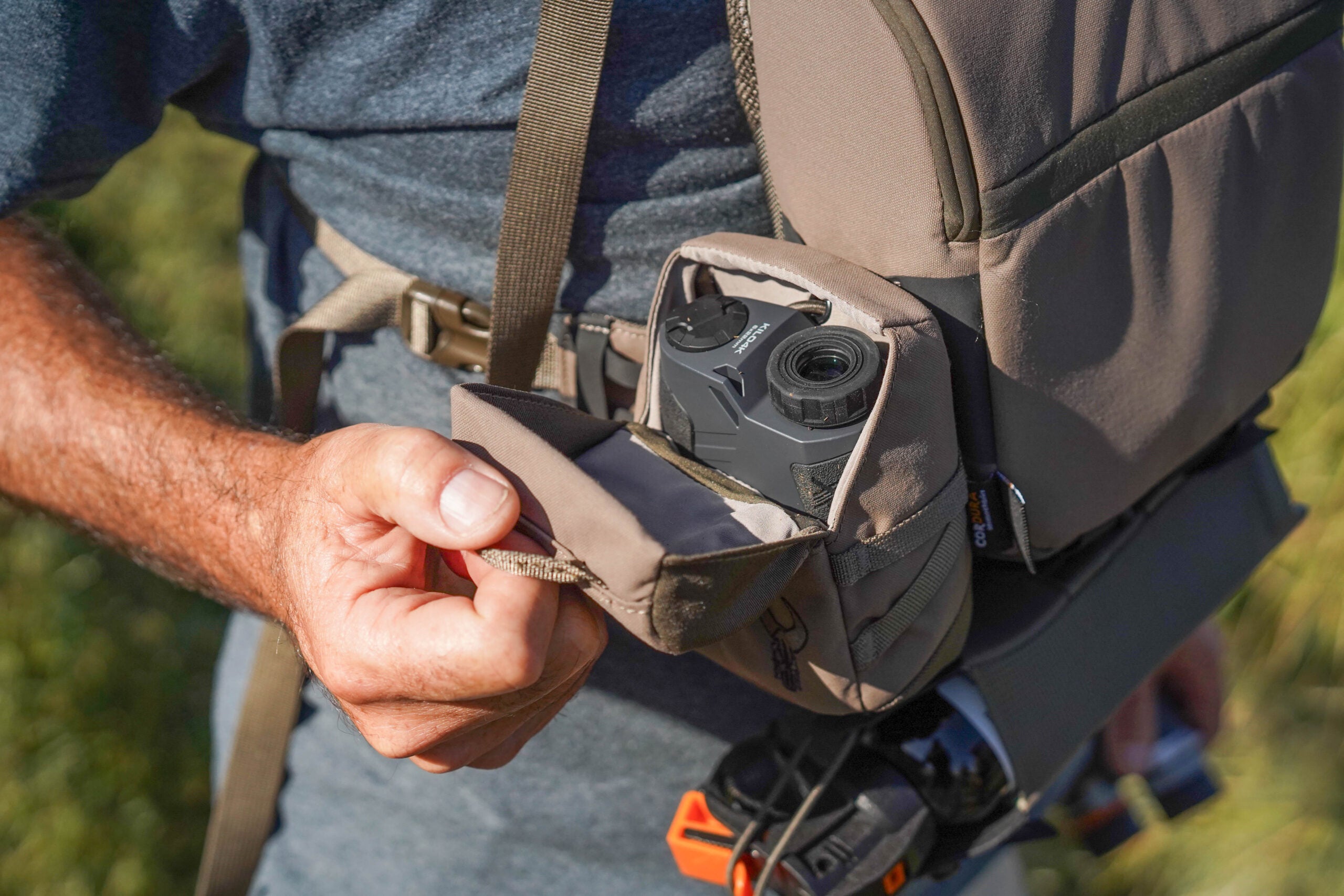
The basics of the KILO4K are shared by Sig’s other (and excellent) higher-end rangefinders. It has Bluetooth connectivity to allow users to access features from the BDX mobile app, which links the rangefinder to BDX-enabled rifle scopes and “smart” binoculars. The KILO4K is pre-loaded with Applied Ballistics Ultralite, which provides precise ballistics solutions out to 875 yards, but users can pair the KILO4K with an external wind and environmental sensor, and through the app, get long-range firing solutions from Applied Ballistics Elite. For shooters who want just the basics, the unit also has eight ballistics groups that users can match to their caliber and load.
The Sig has five ranging modes: BDX-U, BDX-X, angle-modified range (AMR), line-of-sight ranging, and an archery mode. And it has five target modes: first, best, last, fog, and extended range. Combined with a selectable reticle, very good optical glass and coatings, and the fastest ranging engine of our test, this is a powerful, versatile monocular.
We struggled to get readings out to 4,000 meters, as the unit promises. Our best range at our test venue was just inside 2,500 yards, and testers noted that the Sig struggled on non-reflective targets.
“At 1,000 yards, I ranged the gravel road, but couldn’t get a reading on the grass next to it,” noted Scott Einsmann, OL’s gear editor. We noted that inside about 1,200 yards, readings were consistent, but beyond that distance they became sporadic, with testers employing the hunt-and-peck approach of ranging every object around their target in order to get a close-enough reading.
But every tester noted that the image stabilization compensates for iffy readings.
“Stabilization is insane and I could hit an IPSC target at 550 yards handheld,” says Einsmann. “This is the one LRF [in our test] I would buy for hunting.”
As we discovered with Sig’s image-stabilized ZULU6 binocular, image quality can be improved dramatically by removing the shakes and tremors introduced by the hand. The tradeoff is that the non-stabilized image is typically not quite as good as optics that don’t build the shake-settling gyroscope into their products. We also noted that, between the stabilization feature, Bluetooth connectivity, and the full spectrum of software running the KILO4K, battery life is an issue. Make sure you bring backup batteries.
And make sure you bring your checkbook. The image-stabilized 4K is about $260 more than Sig’s very good, but pedestrian in comparison, KILO3K. The main difference is the addition of stabilization in the 4K model, plus a few more bells and whistles and ranging capacity. Our testers reckoned that the stabilization feature is worth that, and more, and given the KILO4K’s wide and deep versatility, made it our consensus pick for the best rangefinder.
Best for Mountain Archers: Vortex Diamondback 2000
Vortex
Key Features
- 5-yard minimum range
- Angle-compensating, line-of-sight, and scan modes
- Tripod mount
Why It Made the Cut
With capability to range deer-sized targets out to 1,400 yards, but with enough close-in precision to range 5-yard targets, the Diamondback 2000 makes the case for a one-and-done hunting rangefinder.
Pros
- Excellent high-definition glass
- Red OLED display easy to see in all light conditions
- Premium carry case
- Wide ranging latitude
Cons
- Single circular reticle
- Blocky in-hand feel
Product Description
A great all-around laser rangefinder, the Diamondback 2000 is at home in a wide variety of conditions, from steep-angle mountain hunting to low-light whitetail hunting. Key features are its portability, thanks to a premium carry case, lanyard, and pocket clip, along with its powerful laser and ranging engine. The unit ranges targets as close as 5 yards and all the way out to 2,000 yards. Good glass, fast scanning rate, excellent angle-adjusted software called HCD (Horizontal Component Distance), and lifetime warranty make this rangefinder a versatile powerhouse.
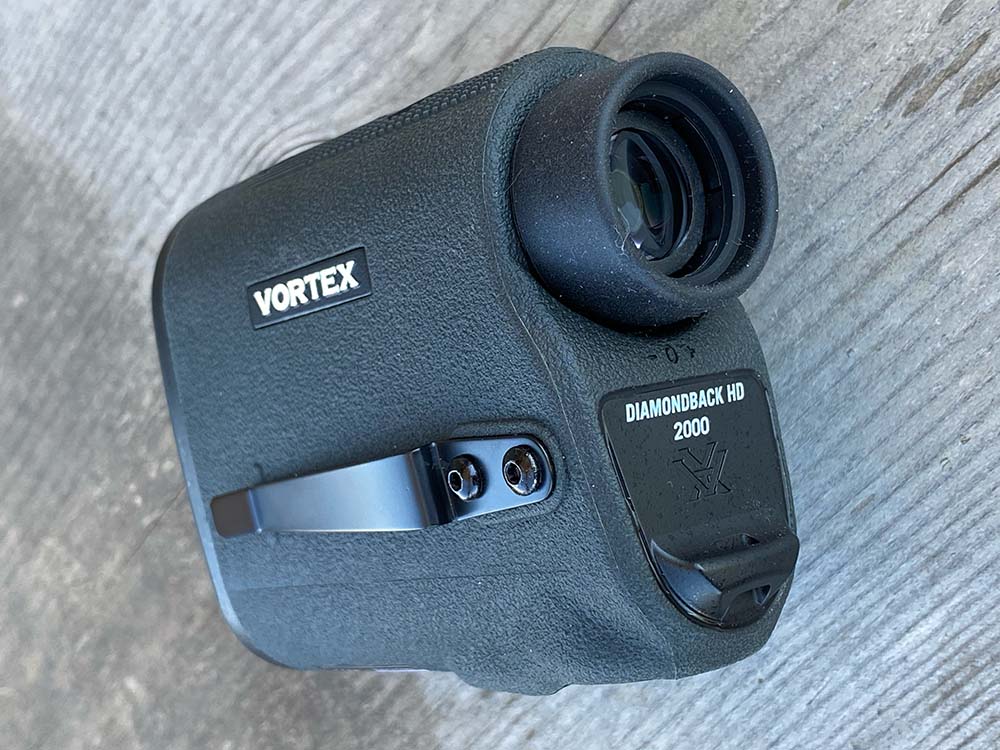
Best for Whitetail Hunters: Bushnell Broadhead
Bushnell
Key Features
- ActivSynch display automatically adjusts to ambient light
- Tripod mount
- 0.3-yard accuracy
Why It Made the Cut
A laser rangefinder configured for bowhunters, the Broadhead combines many of Bushnell’s proprietary features, including the angle-compensating ARC technology for both bow and rifle hunters, close-in precision of .3-yard accuracy, and a ActivSynch reticle that adjusts for ambient light.
Pros
- Angle-compensating ARC technology
- Fast and precise scanning mode
- Palm-swell ergonomics
Cons
- No connectivity to ballistics app
- Deer-target range limited to 500 yards
Product Description
An archery-configured laser rangefinder, this Bushnell unit has three features that make it an essential tool for archery deer hunters. The first and most important is the Angle Range Compensation (ARC) technology that is dialed down for hunters who post up in the best tree stands. The Broadhead’s precision (it measured with 0.3-yard sensitivity out to 150 yards) is the best in this class. Add the scanning mode, which allows hunters to track targets through veiling limbs, and the light-sensitive reticle, and you have a rangefinder that will serve mid-distance hunters through a wide range of environmental conditions. Lastly, the 8-power magnification makes this one of the most powerful monoculars in the field.
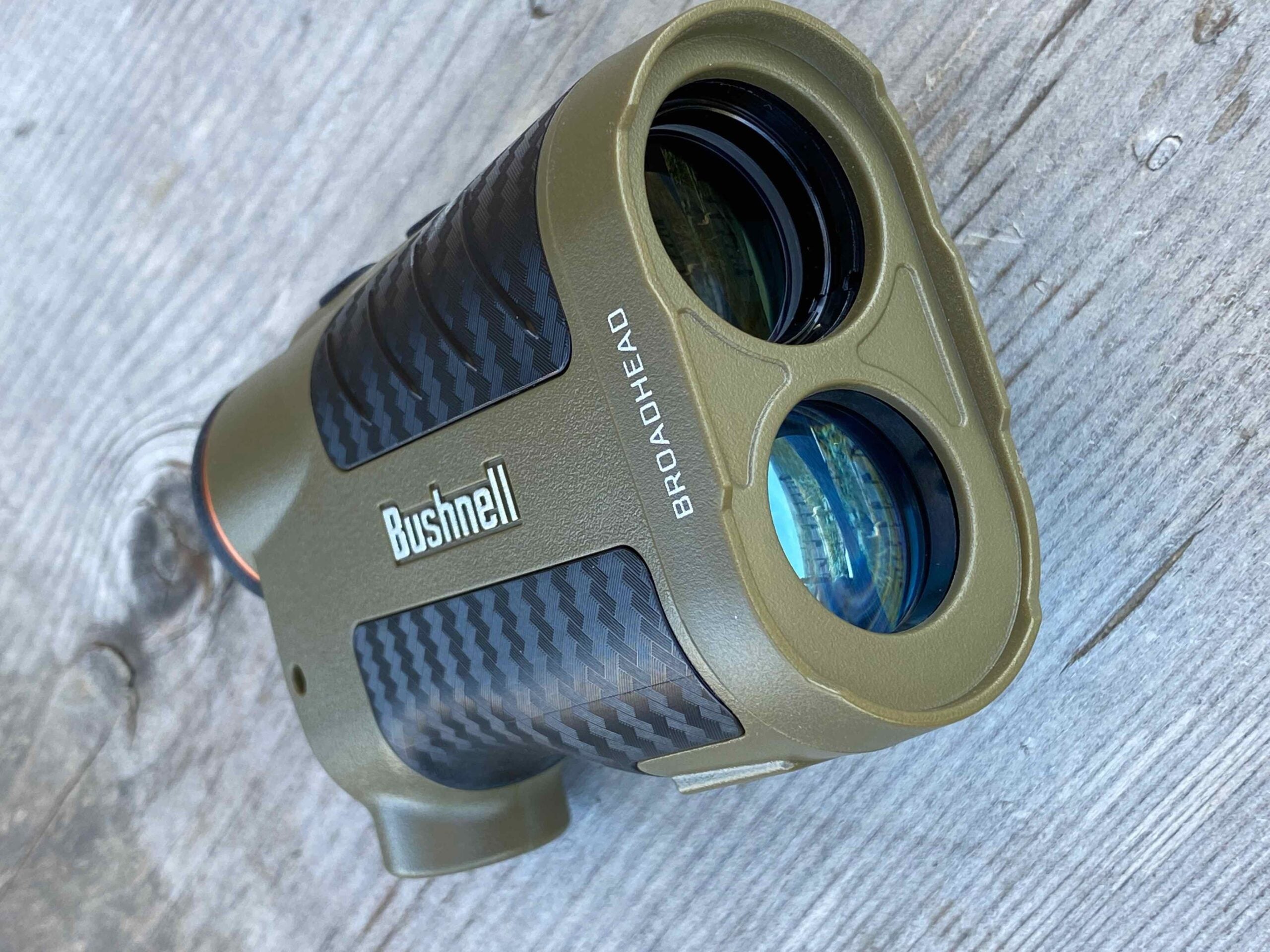
Best Budget: Hawke LRF800
Hawke Sport Optics
Key Features
- 6x magnification
- Multi-Coated lenses
- Three target modes
Why It Made the Cut
Given that you can spend up to $1,000 on a rangefinder, it’s refreshing to find one for a fraction of that price. The Hawke LRF800 sells for closer to $150 but contains most of the modes and features you want in an archery rangefinder.
Pros
- Lanyard and carry case
- Black LCD display
- Minimum range of about 7 yards
Cons
- Glass is pretty dark
- Flimsy feel
Product Description
For hunters looking for a basic rangefinder that won’t break the bank, the LRF800 will give you plenty of utility. With ranging capability from six to 800 yards (I actually got far readings closer to 900 yards), the 6×25 monocular covers most hunting situations. Its 4.6-ounce weight makes it ideal for backcountry hunts, though its lack of angle-compensating ranging will hold it back from many steep-country uses.
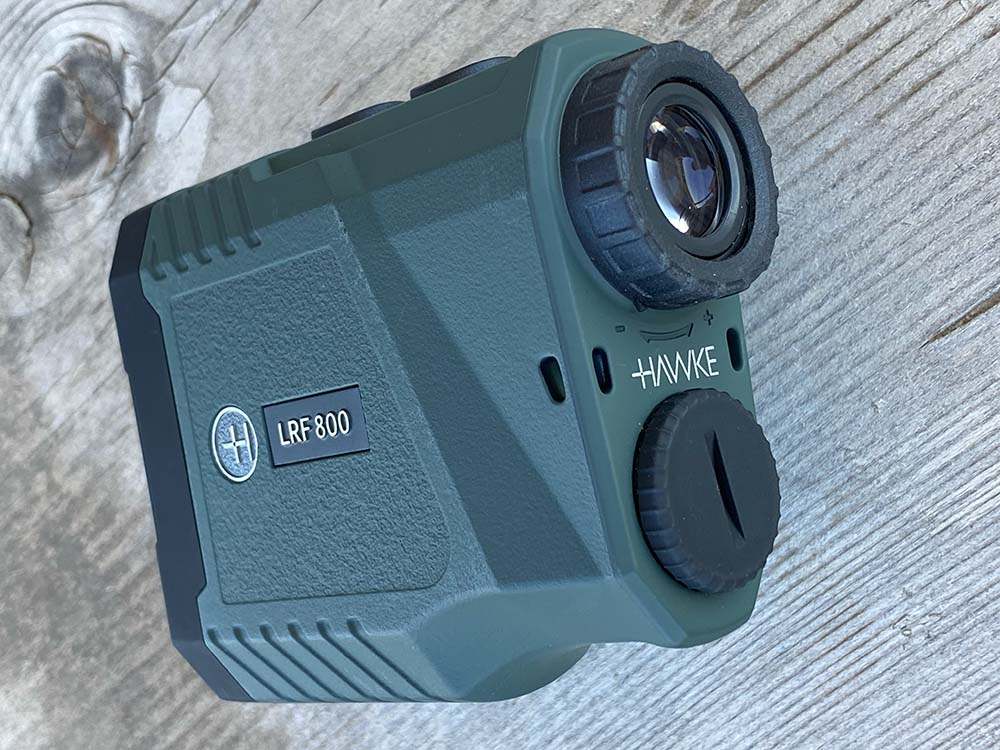
Best for Elk Hunters: Nikon CoolShot ProII Stabilized
Nikon
Key Features
- Stabilization mode reduces hand shake
- Fast scanning mode
- Two-tone LED display
Why It Made the Cut
While this particular unit is configured for golfers, the Nikon CoolShot Pro II Stabilized has plenty of attributes for bowhunters. If you’ve ever tried to trigger a rangefinder when a bugling bull is closing the distance, then you know how your trembling hand can sour the deal. The CoolShot’s stabilization feature makes sure you get an accurate range reading even when you’re delaminating with the pressure of the shot.
Pros
- Gyroscopic stabilization
- Crisp OLED display
- Fast return rate
- 8-1,200-yard range
Cons
- Game-spooking white finish
- Configured more for golf than hunting
Product Description
A previous iteration of this stabilized unit configured for hunters had a low-glare black finish. That unit is no longer manufactured, but that vibration-dampening feature is the CoolShot ProII’s best asset. The guts of this 6×21 monocular are fairly standard, with 8- to 1,200-yard ranging, a variety of target modes, and either line-of-sight or angle-compensated ranging. And its stabilization, which locks onto targets that might be hard to acquire in a strafing wind or when an approaching bull jangles your nerves, makes it one of the best rangefinders for bow hunting.
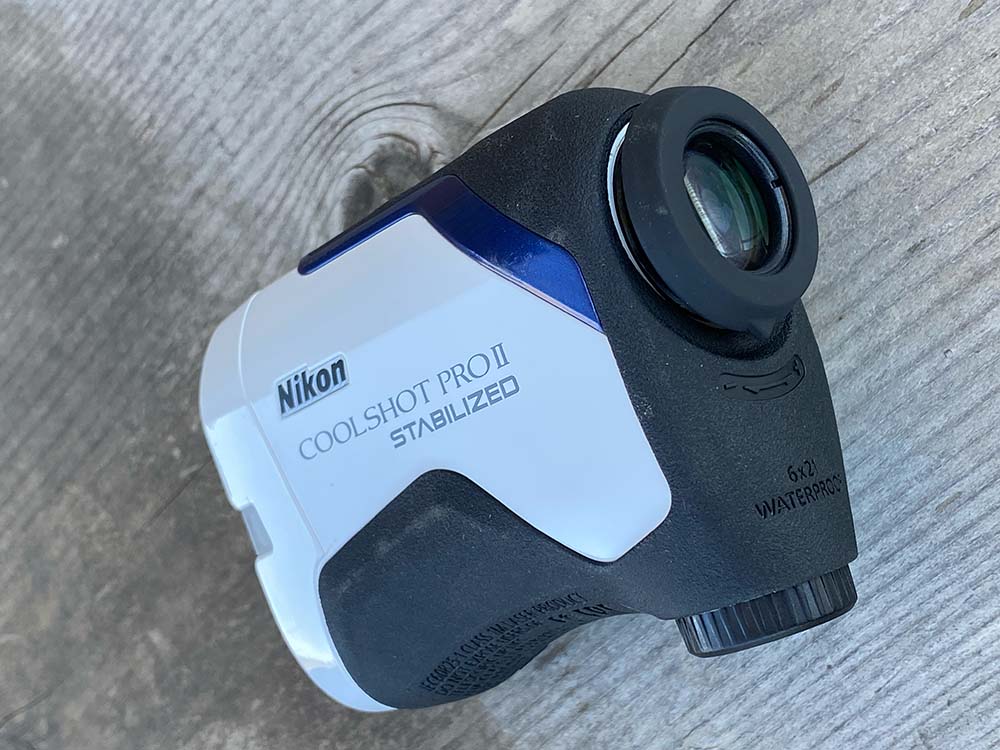
Best Rangefinding Binocular Rangefinding: Leica Geovid Pro 32
Leica
Key Features
- Connects to Leica Hunting App
- Custom ballistic compatibility
- Weight: 1.9 pounds
Why It Made the Cut
While the Geovid Pro 32 is really configured for long-distance rifle shooters, it has a ton of attributes that make it an ideal bow hunting optic. They include an open-bridge design that is easy to use with a single hand, a 10-yard minimum range, and a very precise reticle.
Pros
- On-board environmental sensors
- GPS tracking feature
- Wide field of view
- Compact size for a ranging binocular
Cons
- No built-in tripod mount
- Expensive
Product Description
While bowhunters won’t tap the vast reservoir of attributes the Geovid Pro 32 provides to rifle hunters and shooters, it has so many capabilities for archers that it belongs in this conversation. Apart from its ranging talents, it has a GPS-enabled tracking feature—it’s called Leica ProTrack—that provides the precise GPS coordinates from your previously measured distance. Combine that with a digital mapping service, and you can begin your recovery of game from the very spot you sent your arrow. Besides its best-in-class optics and wide field of view, the Geovid has 10-yard minimum ranging, a very precise reticle, and on-board environmental sensors that provide temperature, air pressure, cardinal direction, and altitude, making them some of the best binoculars for hunting.
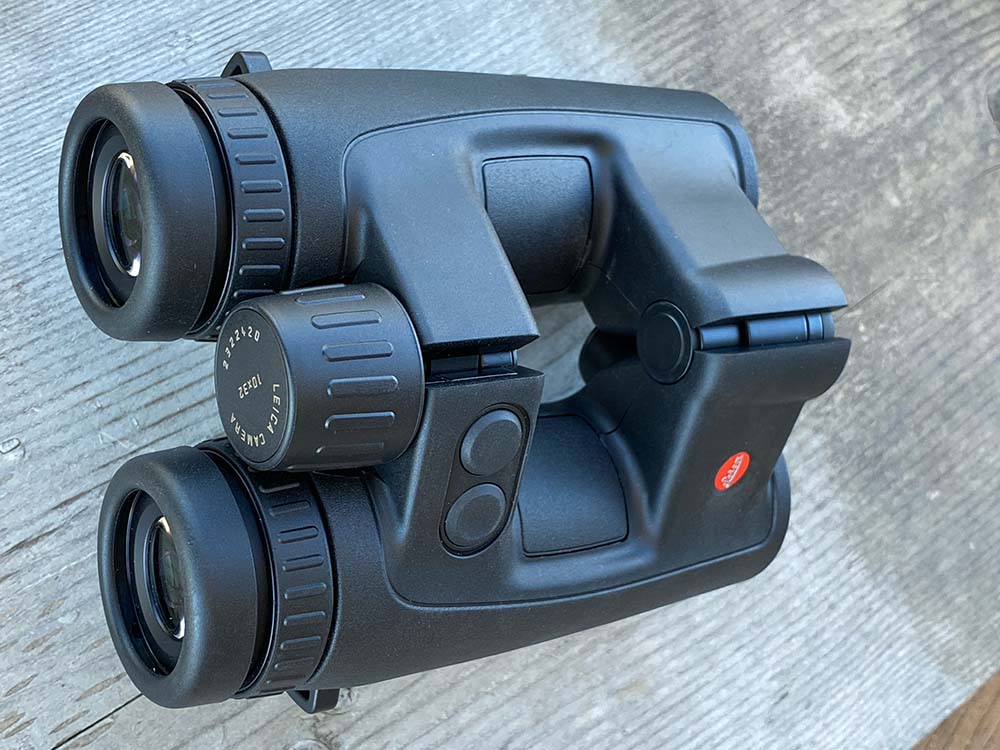
Best for Crossbow Hunters: Sig Sauer KILO 1600 BDX
Sig Sauer
Key Features
- Connects to BDX-compatible optics
- 6-yard close ranging
- Ranges up to a mile
Why It Made the Cut
Back in 2019, when Sig partnered with Mission to bring an integrated crossbow and distance-compensating scope to the market, it also reconfigured the KILO 1600 with BDX (Ballistics Data Xchange) technology so that the rangefinder could talk to the scope through a Bluetooth connection. It remains the most elegant (and deadly) integrated optics platform in crossbow hunting.
Pros
- Bluetooth connectivity
- Clear red OLED display
- Premium carry case
Cons
- Tripod mount must be purchased separately
- Fairly complicated mode menu
Product Description
Crossbow hunters face the same dilemma as vertical bow hunters: they must know the precise yardage to their target since the ballistics of crossbow projectiles are every bit as affected by gravity and wind as compound-bow projectiles. While crossbow bolts shoot flatter in the first part of their trajectory, beyond about 40 yards, they drop at an alarming rate, which simply means that crossbow hunters need to know the drop at every yardage. That’s where Sig’s BDX system comes into its own.
Integrated with a BDX-enabled crossbow scope, a hunter can range a target, and the holdover appears as a lighted dot inside the scope, showing precisely where to hold to make a bullseye at any distance. Add the regular attributes—angle compensation along with line-of-sight modes, three different target modes—with ballistics information that tells users how many MOA and mils to dial their scope, and you have a unit that can pull double duty for crossbow hunters and rifle shooters.
Things to Consider Before Buying a Bow Hunting Rangefinder
First, do you really need a rangefinder that’s engineered for bow hunting? Many models that you might use for rifle hunting or shooting are fully compatible with bow hunting. Just make sure that the minimum distance ranges around 10 yards and that they have angle-compensating modes as well as line-of-sight ranging. Beyond those basics, here’s what you need to consider before buying a rangefinder for bow hunting:
One-Hand Operation
How easy is it to deploy the rangefinder with a single hand, assuming your other hand will be occupied with holding your bow?
Arrow Flightpath Technology
Does the unit have software that calculates your arrow’s trajectory? This feature can help you shoot over or under limbs or other obstructions.
Precision
The best archery-specific rangefinders range in fractions of yards.
FAQs
Q: How much does a rangefinder cost?
You can spend as little as $150 or as much as $3,000 on a laser rangefinder. Within those extremes, you’ll find most full-featured rangefinders run in the $350-$500 range. Hawke’s LRF800 costs right around $150, but it lacks angle-compensation mode, and its glass is pretty murky. At the highest end, around $3,000, Leica’s Geovid Pro 32 rangefinding binocular gives you a Bluetooth interface with a mobile app, GPS tracking capabilities, an on-board weather center, and a powerful laser rangefinder that can zoom from 10 yards out to 2,500 yards. But for around $400, you should expect both angle-compensating and line-of-sight ranging, two or three target modes, a laser that should range from as close as five yards out to about 1,600 yards, and a display with adjustable intensity.
Q: Are standard rangefinders the same as rangefinding binoculars?
Standard rangefinders are functionally the same as rangefinding binoculars, but there’s also quite a bit of difference in how you deploy each in a field setting. Standard hand-held rangefinders are monoculars, in that they have a single lens. That second lens is actually a sensor that measures the laser return. Laser rangefinding binoculars have two lenses. So the biggest differences are size and optical performance. One of the most important attributes of a rangefinder for bow hunting is that it can be operated with one hand. The advantage here goes to the monocular. But the best rangefinding binoculars for bowhunters have an open bridge that enables one-hand operation. An advantage of ranging binoculars is that they can be easily stabilized with two hands, an important consideration if you’re trying to get the range on a small, moving target.
Q: What should I look for in a rangefinder for bowhunting?
You should look for attributes that are common to short-distance archery hunting and target shooting. For starters, make sure you consider the minimum ranging distance before you consider the maximum ranging distance. The best rangefinders for bowhunters have close-in ranging capabilities of five to 10 yards. Second, make sure the reading is delivered in fractions of a yard for those close distances. Bushnell’s Broadhead laser rangefinder, for instance, measures in 0.3-yard increments out to 150 yards. That precision is a huge advantage when you’re trying to drop an arrow over a limb at 27.5 yards, or if you’re aiming for the center ring in a 3D target.
Second, if you hunt from a tree stand or elevated blind, make sure your rangefinder has angle-compensating mode. That will make the difference between a kill and a wounding loss in high-angle shots, whether from a tree stand platform or in steep mountain country. And if you’re looking for even more bow hunting-specific features, consider software such as Bushnell’s ARC or Leupold’s Archers Advantage and Flightpath technology, which calculates all the variables that go into an arrow’s arc and gives you a precise and customized aiming solution.
Final Thoughts on the Best Rangefinders for Bow Hunting
Serious bowhunters know that in order to make an ethical shot with archery gear, they need to know the precise distance to their target. And they also realize that they must know exactly where their arrow will go at each distance. Those two considerations make a laser rangefinder an essential piece of a bowhunter’s kit, to the degree that most wouldn’t consider hunting without one.
But not all rangefinders are configured for bowhunters. In this roundup, I gathered the best rangefinders for bow hunting on the market. Some, like Bushnell’s Broadhead and Leupold’s FullDraw-5, are archery-first units. Others, like the Coolshot Pro from Nikon and Leica’s remarkable Geovid Pro 32 binocular, aren’t really intended for bow hunting, but they have so many relevant features that I included them here. In the final analysis, any rangefinder is better than none, but if you want to increase your lethality and success, make sure you have one in your bowhunting backpack.
The post The Best Rangefinders for Bow Hunting of 2023 appeared first on Outdoor Life.
Articles may contain affiliate links which enable us to share in the revenue of any purchases made.
Source: https://www.outdoorlife.com/gear/best-rangefinders-for-bow-hunting/

